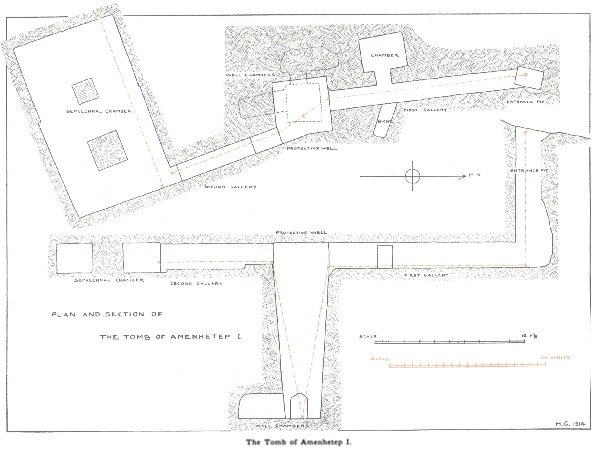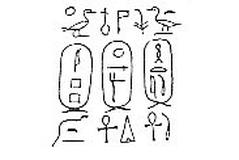
Dra’ Abu El-Naga Visiting Hours, Tickets, and Historical Highlights in Luxor, Egypt
Date: 14/06/2025
Introduction
Dra’ Abu El-Naga, nestled on the west bank of the Nile in Luxor, is a captivating archaeological site forming part of the vast Theban Necropolis. Renowned for its concentration of tombs belonging to ancient Egypt’s elite, the site reflects over two millennia of funerary traditions, administrative history, and religious practices. Recent discoveries—most notably the 2025 unearthing of three New Kingdom tombs—have further elevated Dra’ Abu El-Naga’s profile among Egyptologists and travelers alike. This guide provides a comprehensive overview of Dra’ Abu El-Naga’s significance, visiting hours, ticketing options, cultural importance, and practical advice for visitors.
Table of Contents
- Historical and Archaeological Significance
- Visitor Information
- Cultural Insights & Responsible Tourism
- Safety, Health, and Practical Tips
- Nearby Attractions & Itinerary Planning
- Frequently Asked Questions (FAQ)
- Conclusion & Travel Recommendations
- References
Historical and Archaeological Significance
Location and Context
Dra’ Abu El-Naga occupies a strategic position at the northern end of the Theban Necropolis, directly opposite the modern city of Luxor and near the entrance to the Valley of the Kings. Its proximity to the cult center of Amun at Karnak and other royal burial grounds underscores its importance as a cemetery for high-ranking officials, priests, and royal family members (Cairo Scene; Landioustravel).
Chronological Development
The necropolis was in continuous use from the Middle Kingdom (c. 2050–1710 BCE) through the New Kingdom (c. 1550–1070 BCE) and even into the Coptic period. Its earliest burials are linked to the rise of Thebes as a political and religious hub, with tombs ranging from modest shaft burials to elaborate rock-cut complexes adorned with painted scenes and inscriptions (The National News).
During the New Kingdom, particularly the 18th and 19th Dynasties, Dra’ Abu El-Naga became the favored burial ground for the non-royal elite, especially those closely associated with the Amun priesthood and the administration of Thebes.
Recent Discoveries
In May 2025, archaeologists discovered three significant New Kingdom tombs at the site:
- Amum-em-Ipet: A Ramesside official linked to the estate of Amun; his tomb features a courtyard, square hall, and remnants of funerary scenes.
- Baki: Supervisor of a grain silo in the 18th Dynasty, his tomb includes a corridor-like courtyard and interconnected chambers (Cairo Scene).
- “S”: Identified as a supervisor at the Temple of Amun and mayor of the northern oases, with a tomb displaying unfinished construction and administrative inscriptions.
These discoveries shed light on the administrative and religious life of the New Kingdom, revealing new information about the individuals who shaped Egypt’s bureaucracy during its imperial zenith (The National News; ArchaeologyMag).
Architectural Features
Dra’ Abu El-Naga’s tombs exhibit architectural diversity, from simple rock-cut chambers to multi-roomed complexes with courtyards, halls, and chapels. Wall paintings and reliefs depict not only funerary rituals but also scenes of daily life, administrative duties, and ceremonies. Unlike the royal tombs of the Valley of the Kings, Dra’ Abu El-Naga’s artwork often offers a more personal and secular perspective on the ancient elite (Against the Compass).
Visitor Information
Getting There & Site Access
- Location: West bank of the Nile, north of Deir el-Bahri, easily reached via car, taxi, or organized tour from Luxor city center.
- Transport: Most visitors use private transport or tours, as public options are limited (TripHobo).
- Site Layout: The necropolis is divided into north and south sectors, with notable areas such as the main hill, Deir el-Bakhit (Coptic monastery), and Shig el-Ateyat wadi (exploreluxor.org).
Visiting Hours
- Typical Hours: 6:00 AM to 5:00 PM daily.
- Best Time to Visit: Early morning for cooler temperatures and fewer crowds.
- Duration: Average visit is two hours; allow more time if combining with other sites.
Tickets & Fees
- Standard Ticket: Around 100 EGP (subject to change based on tombs open and nationality).
- Purchase: Tickets available at the main West Bank ticket office; cash (EGP) is preferred.
- Combined Passes: Consider the Luxor Pass for access to multiple West Bank sites (Against the Compass).
Guided Tours & Site Etiquette
- Guides: Highly recommended; many are trained Egyptologists and add depth to your visit.
- Site Etiquette:
- Photography is usually allowed without flash; always confirm restrictions.
- Do not touch wall paintings, artifacts, or enter closed tombs.
- Dress modestly (cover shoulders and knees).
- Remain on marked paths to prevent damage to unexcavated areas.
Facilities & Accessibility
- On-site Amenities: Minimal; bring water, snacks, sun protection, and personal essentials.
- Restrooms: Limited and basic; use facilities at nearby attractions or hotels.
- Accessibility: The terrain is uneven and not suitable for wheelchairs or those with significant mobility issues.
Cultural Insights & Responsible Tourism
Dra’ Abu El-Naga provides a window into the administrative and religious life of ancient Egypt’s elite, beyond the pharaohs. Scenes in the tombs humanize the ancient world, depicting daily activities, family life, and ritual ceremonies. Visitors can support preservation by respecting all site rules, following marked trails, and not disturbing ongoing excavations. Sustainable tourism, including choosing eco-friendly accommodations and supporting local guides, helps ensure this heritage endures (e-visa-egypt.com).
Safety, Health, and Practical Tips
- Climate: Best visiting months are October–April (milder temperatures); summer can exceed 40°C.
- Hydration & Protection: Bring water, sunscreen, a hat, and sunglasses.
- Clothing: Lightweight, long-sleeved shirts and trousers protect against sun and dust.
- Travel Insurance: Strongly recommended, covering medical emergencies and site visits.
- Emergency Contacts: Save embassy and local emergency numbers; register your visit if possible (UK Government Travel Advice).
- Health: Vaccinations for Hepatitis A, Typhoid, and Tetanus are advised.
- Cash: Carry small denominations of EGP for tips and purchases.
Nearby Attractions & Itinerary Planning
Dra’ Abu El-Naga is ideally located for a full day of West Bank exploration:
- Valley of the Kings: Home to over 60 royal tombs (e-visa-egypt.com).
- Deir el-Bahri: Mortuary temple of Hatshepsut.
- Medinet Habu: Mortuary temple of Ramesses III.
- Ramesseum: Memorial temple of Ramesses II.
- Coptic Monastery of Deir el-Bakhit: Reflecting the later (Coptic) occupation of the necropolis (exploreluxor.org).
Customize your itinerary with tour operators or self-guided walking apps (GPSmyCity).
Frequently Asked Questions (FAQ)
Q: What are Dra’ Abu El-Naga’s official visiting hours?
A: Generally 6:00 AM–5:00 PM, but check locally for seasonal changes.
Q: How much are tickets?
A: Around 100 EGP for general admission; prices may vary with access and bundled passes.
Q: Are guided tours available?
A: Yes—highly recommended; many guides are Egyptologists.
Q: Is the site wheelchair accessible?
A: No, due to uneven terrain.
Q: Can I take photos?
A: Photography without flash is usually allowed; always confirm restrictions.
Q: When is the best time to visit?
A: October–April; early morning for comfort and fewer visitors.
Conclusion & Travel Recommendations
Plan your visit to Dra’ Abu El-Naga and unlock the stories of ancient Egypt’s non-royal elite—a unique perspective beyond the famed royal tombs. For more insights and itinerary ideas, explore our related guides on Egypt’s archaeological wonders.































































